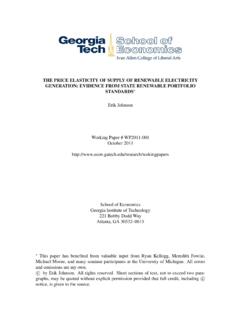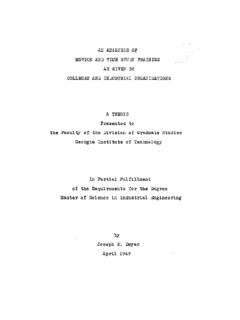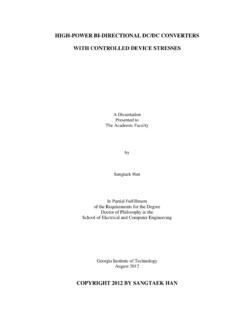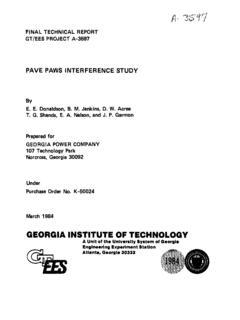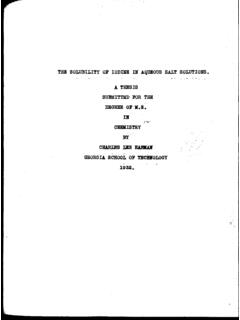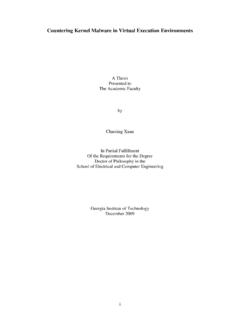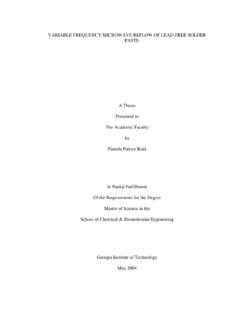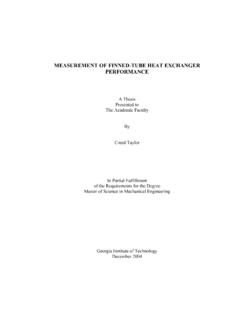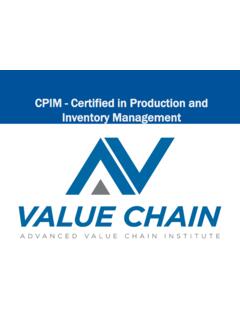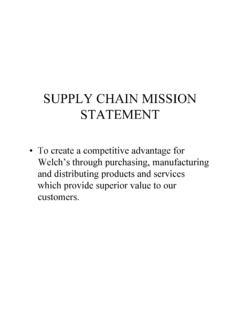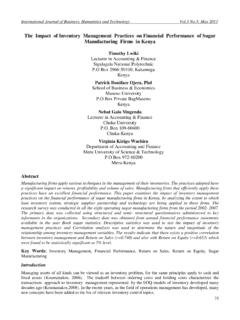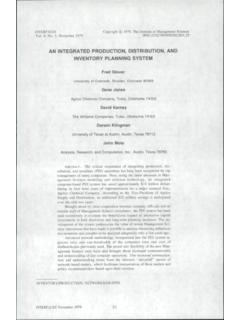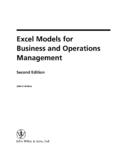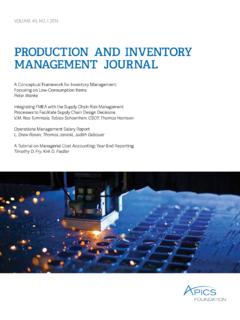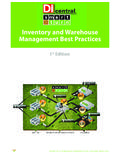Transcription of PRODUCTION PLANNING AND INVENTORY CONTROL MODELLING A ...
1 PRODUCTION PLANNING AND INVENTORY CONTROL MODELLING IN A COMPOSITE TEXTILE MILL A THESIS Presented to The Faculty of the Division of Graduate Studies and Research By Ashok Marwaha In Partial Fulfillment of the Requirements for the Degree Master of Science in Textile Engineering Otorgia Institute of Technology August 1975 Y", <0 r PRODUCTION PLANNING AND INVENTORY CONTROL MODELLING IN A COMPOSITE TEXTILE MILL Approved: David R. Gentry, Chairman^ Lawrence H. Olson Russell G. Heikes Date approved by Chairman; g-XI ACKNOWLEDGMENTS I am greatly indebted to Dr.
2 David Gentry, my thesis advisor, for his inspiring friendship, willing advice, and encouragement not only during all phases of this research, but throughout the entire duration of my graduate work at this Institute. I would also like to express my gratitude to Dr. Russell Heikes and Dr. Howard Olson, the members of my reading committee. Without their cooperation and assistance, completion of this work would not have been possible. ill TABLE OF CONTENTS Page ACKNOWLEDGMENTS ii LIST OF TABLES iv LIST OF ILLUSTRATIONS v Chapter I.
3 INTRODUCTION 1 Purpose of the Research Method of Procedure II. REVIEW OF PRODUCTION PLANNING MODELS 4 Mathematical Concepts of PRODUCTION PLANNING PRODUCTION Process of a Textile Mill Review of Mathematical PRODUCTION PLANNING Models III. DISCUSSION OF MODEL 18 Assumptions Made in the Model General Discussion Model Development IV. DISCUSSION OF RESULTS 28 V.
4 CONCLUSIONS AND RECOMMENDATIONS 48 Conclusions Recommendations APPENDIX I 50 APPENDIX II 52 APPENDIX III 55 BIBLIOGRAPHY 57 IV LIST OF TABLES Table Page 1.
5 No Constraints on Regular Time Utilization 29 2. With Constraints on Regular Time Utilization 33 3. Effect of Increasing Profit Margins on Fabrics by 5% .. 37 4. Yarn Purchase Not Allowed 40 5. No Initial Inventories of Yarns and Fabrics 44 6. Effect of Reducting Profit on Yarn Sales by 14% 47 7. Effect of Increasing PRODUCTION Costs for Fabrics 47 LIST OF ILLUSTRATIONS Figure Page 1.
6 PRODUCTION Line for a Typical Textile Mill 2. Flow Chart of a Multi-stage Structure -,^3 CHAPTER I INTRODUCTION The aim of this thesis is to develop a mathematical model for PRODUCTION PLANNING and INVENTORY CONTROL in a typical composite textile mill. An attempt will be made to show how this PLANNING technique may be used effectively to assist other functions such as marketing and scheduling in the textile PRODUCTION system. Although much work has been carried out in the general area of PRODUCTION PLANNING , little has been published specifically for the textile environment.
7 Purpose of the Research The need for PRODUCTION PLANNING arises out of the observation that many mills suffer losses, or fail to attain maximum possible pro-fits because of improper PLANNING of PRODUCTION and INVENTORY at criti-cal stages. Many times large amounts of capital are tied up in INVENTORY at relatively less crucial points. Shortages which upset the entire PRODUCTION schedule and result in heavy losses, then occur at crucial stages. Sometimes PRODUCTION plans are drawn which are not feasible practically. There are a large number of products which every textile mill can manufacture using the same basic resources of raw material, men, and machines.
8 Each of these may require varying amounts of these resources, thus the costs and also the unit profits are different for the different products. Since the resources are usually limited, the problem arises as to what products should be manufactured, in what quantity, and by what date. PRODUCTION schedules depend on various factors such as demand, availability of resources, costs, selling price, and the company's marketing strategy. Considering all the factors simultaneously may result in a large number of feasible combinations of schedules. It is obviously impractical to try out each possibility in the mill.
9 Through PRODUCTION PLANNING it is possible to determine the plan that most profitably employs the company resources. This plan is based both on sales forecasts and the manufacturing constraints. Pro-duction PLANNING ensures that the detailed plans generated to meet a PRODUCTION schedule are feasible and can be executed within the re-sources available. Also, PRODUCTION PLANNING allows textile managers to make a thorough analysis in long-range PLANNING of resources, as well as short-range changes that can be made on an existing PRODUCTION plan. The inprocess inventroy which depends on various factors as material demand, value of goods, risk of obsolescence, is very much a part of the entire PRODUCTION plan.
10 A major advantage of the techniques used for PRODUCTION PLANNING is the use of sensitivity analysis. It provides the PLANNING system with the capability to simulate the addition of new resources. This simulation helps to determine the effect on profitability of acquiring additonal resources. To help marketing strategy, alternative plans can be tried by changing the selling price of the product and keeping the demand pattern consistent. The most profitable plan can then be selected. The validity of the results will of course depend largely on the accur-acy of sales forecasts.

